The Great Fiat Hunt
Chasing the vintage Fiat 500
From August to November 2015, Lodestars contributors Renae Smith and Kieren Toscan (and Gina the Fiat) took a slow trip all over Italy in search of one of its most iconic cars - the vintage Fiat 500. They documented their journey with photos and stories of the 500s they found, the people who love and drive them, and many of the other things they came across along the way.
What began as a ‘hey wouldn’t it be cool to...’ idea over a few red wines some years ago grew into one of the biggest projects they’d ever undertaken. The resulting book, The Great Fiat Hunt, is a thing of beauty - one you can order here.
Enjoy the excerpt below …
Food, Life and Love with Antonio Carlucio
The chef’s chef …
Interview by Liz Schaffer & Photographs by Tom Bunning
Very sadly Commendatore Antonio Carluccio OBE passed away in November last year. We hope you'll enjoy reading this interview with him, first published in Lodestars Anthology Issue 4, Italy.
Proudly declaring himself to be a cook rather than a chef (by his own definition a chef is professional while a cook does it for passion), Antonio Carluccio was the quintessential Italian about London. Driven by his zest for food, life and Italy, it was the passing on of wisdom that inspires much of Carluccio’s work. Arriving in England via Austria and Germany, where he worked as a wine merchant for almost a decade, Carluccio launched a fleet of eponymous restaurants, ran some of the capital’s culinary icons, became a BBC fixture and was awarded an OBE, which he retitled his Order Boletus Edulis - the Latin name for mushroom, his signature. Young at heart, Carluccio’s enthusiasm was invigorating; proof that life should be lived in the pursuit of pleasure, ardour and flavour.
Your background and training are quite unconventional. Can you tell us about this and how you came to be a cook?
I was born on the Amalfi Coast and was the fifth son of a stationmaster. [We were] transported up North where I grew up near Asti, then I moved a little further up and worked for Olivetti. At the time Olivetti was something fantastic but I didn’t like it very much and I was thinking I could holiday on the Riviera and [there] I met an Austrian girl and we fell in love. She came to work in Olivetti and when my youngest brother died in 1960 she said, “why didn’t I come to Vienna?”.
I cooked all the time because in Vienna to have the food my mother used to [make] I had to cook. I remembered what she was doing because in Italy when you are the young son you participate in everything.
In Vienna I started to cook what I knew. I didn’t know very much but I cook and cook and I’m sharing it with friends and frequenting bohemian cafes. You meet incredible people and I like art so I met Oskar Kokoschka and Max Ernst and we were sharing pasta. I was having fun and cooking all the time. It was only when I came to England in 1975 [and] I was still cooking, that my ex-wife [suggested], “why you don’t [enter] the best cook competition of The Sunday Times?”. I did and I was in the final but for me it wasn’t professional, I was a wine merchant, but funnily enough the press began to contact me. For them I was ‘the Italian’, flamboyant and believing in mushrooms and pasta, and so I was in the press.
At the same time my ex-brother-in-law Terence Conran, the owner of the Neal Street Restaurant in Covent Garden, asked me to run the restaurant and I said, “look I don’t cook, I don’t do administration, but I will be there doing the restaurant and running it”, which I did. Then came the BBC and I did quite a [few] food and drink programmes. My first Italian series was going to Italy doing twelve half an hours in all the regions. The other series was with Gennaro Contaldo but I did quite a lot in between and I was also writing books. I can’t stay doing nothing.
Do you think people are drawn to the Italian attitude towards food?
Italians live for food. When we were children going to school in the morning you’re already preoccupied by what you would eat in the day. It was the end of war time and the question to other children was “what will you eat for lunch?” and after the meal it was “what did you have for lunch?”, constantly. I remember in the afternoon, when you’re boys you do things, sometimes we were stealing a cabbage from the field and cutting it very, very thinly. Somebody [brought] olive oil, somebody a bit of vinegar and salt and pepper and we were making salad with bread. It was the best salad ever.



Is there an ethos or technique that sets your food apart?
I created a motto for my cooking, ‘mof mof’, minimum of fuss, maximum of flavour, and as such I don’t go to the lengths to elaborate on food because the most important thing is the taste. If you have the taste the look can be indifferent.
In fact we have items in Italy called brutte ma buone, ugly but good; fruit, even biscuits, that show you the possibility of the flavour. I dedicate everything to that which is obtained by regional food. Italy is famed for its 20 diverse regions.
What do you think makes them so distinctive?
Italy was unified in 1861 but I think in spirit each region is a country. You find culture in Italy from everywhere because each one was coming, the French, the Persians, everybody, to Italy. Even Alexander the Great was there. They united Italy in 1861 but there are different languages, different dialects, different customs. But they are united in thinking of the food as one of the best things.
They may be united by a love of food but is there still competition between the regions?
Between little villages! If somebody makes a dish someone in the next village will say, “ahh but I do it with this and this and this”. Immediately there is a conversation. I remember as a child if you were encountering somebody on road and it was lunchtime you would say, “do you want to have lunch?”. It was very simple. They would come home with you. So this is the attitude of the Italian, they really care. I always say that Italy has two or three million Michelin starred chefs, they’re all the housewives.
What do you love most about Italian cooking?
The Italians, what they have in front of others, the Germans, Austrians, English, French, is the attitude. I remember when we used to live in the train station my mother would say, “go downstairs and see if the trains are departing on time” in order to put the pasta in the water so that when papa was coming up the pasta was perfect. When you grow up with this sense of procedure and [significance] then you know food is important. She was really thinking to please other people because cooking for others is an act of love.
[Because of the various regions and diversity] I think that Italy has a more complete menu. There are 600 shapes of pasta and each can be done as a specialty with a special sauce, special ingredients. Italians want good taste and they’re prepared to use all those wonderful shops. In Napoli especially there were shops selling only pasta, and the pasta was loose, not in packets but in drawers, and all the leftovers were put into one ‘special’ and this is for pasta e fagioli - bean soup with pasta - which is wonderful, all bits and pieces. So they really have fun. While other nations have fun in eating the Italian has fun in thinking and imagining it.
What advice do you have for prospective chefs?
You have to desire food, not being greedy but being discerning about what you eat, and pay attention and love your food. If you don’t have those three things you stop cooking because there would be no point, it would just be a job, no fun. Food, it’s not only preparation but fun in eating. It’s good for the brain, for the body, the spirit, for everything.
Jewel of the South
Discovering Italy.
Words by Nardia Plumridge & Photographs by Renae Smith
One of the joys of travelling through Italy is its diversity. From snow-capped northern Alps to turquoise southern beaches, it couldn’t be more poles apart. But what makes this country so fascinating is that it’s not just the landscape that changes, it’s the culture too.
Puglia is the region occupying the heel of the Italian boot. Reaching the Ionian Sea to the south and running along the Adriatic Sea to the east, it borders Molise, Campania and Basilicata. A long, thin land with six provinces, what it lacks in powerhouse cities like Rome or Milan it makes up for with medieval villages, remote beaches, quaint fishing towns, farmland and run-down fortresses. Welcome to the jewel of the south.






To understand Puglia, you have to delve into its history, shaped by Mycenaean Greeks, Ancient Romans, Byzantines, Normans and the powerful Kingdom of Naples. And to truly feel Puglia, you must travel around its coast, exploring its rugged beaches, barren central landscape and whitewashed towns.
Leaving the port town of Brindisi - its industrial feel isn’t a reflection of the rest of the region - you encounter Puglia’s flat landscape, lined with pine trees and kilometres of white sandy beaches that stretch south along the Adriatic Sea towards Lecce.
With its elegant laneways and Baroque architecture, Lecce is one of Puglia’s most popular destinations. A walled town dating back, so legend has it, to the time of the Trojan Wars, it was ruled by Emperor Hadrian and today is a 17th century spectacle rebuilt in Baroque fashion. Largely constructed from local limestone, for which this area is famed, it is a glittering gem of a town where, at every turn, there is another building to behold. Such architectural beauty has led some people to refer to Lecce as the ‘Florence of the South’, yet to compare isn’t accurate or fair, for Lecce has a magnificence all its own.
Driving through Galatina towards Gallipoli you pass countryside filled with olive groves that make up much of the farmland. Olive oil is one of the region’s biggest exports and in the 18th century this part of Puglia became the largest olive oil market in the Mediterranean. The fortress town of Gallipoli along the west coast of the Salentina Peninsula is built on a limestone island and linked to the mainland by a 16th century bridge. Having held great economic power due to its geographical position, today Gallipoli is a magical seaside haven with quiet laneways that nip and dive around residential buildings.
Heading off the main roads, the sound of the locals’ Italian chatter lingers as you walk by their open windows and in the distance the gentle roar of a Vespa fills the air - then you turn a corner to see the breathtaking Ionian Sea. Surrounded by 14th century walls (renewed by the Spaniards in the 16th century), the Baroque architecture of Gallipoli is its main attraction - the façade of its grand 17th century Cattedrale di Sant’Agata was created by Giuseppe Zimbalo, who was also responsible for Lecce’s Basilica di Santa Croce. Fishing is also big business with a seafood market open daily from six until nine in the morning at the walls by the old castle where you can buy the local specialty gamberi rossi (sweet red shrimp) that is so fresh it is eaten raw.
The coastline in this area of Italy remains untouched in many parts with roads running alongside the white powdery sand and azure sea. Driving along the south west coast on the smaller SP roads it’s easy to reach the very tip of Puglia - and therefore Italy - at the village of Santa Maria di Leuca. Founded in the early 1st century and taking its name from the Greek Leucasia, meaning white beautiful mermaid, it is where the Ionian and Adriatic Seas meet, the De Finibus Terrae (End of the Land). Up a 284 step staircase from the town is Santurario di Leuca, a Christian church built on the site of a former Roman temple dedicated to Minerva, the goddess of wisdom, offering stunning views away from Italy towards Africa.




If Lazio has the history of Rome, Tuscany the art of Florence and Veneto the canals of Venice, Puglia has the trulli of Alberobello; stone huts with conical roofs. This central part of the region, the Itria Valley, is full of quaint hilltop towns glowing white from using the local limestone, the most mesmerising being Martina Franca and Ostuni. Here the landscape changes, becoming more rugged, and then the trulli appear. These temporary shelters acted as storehouses or permanent homes for labourers and their families; simple drystone structures popular in the 19th century, the circular buildings look as if they are drawn from a Tolkien novel. The design was created to avoid taxes - the roof can be easily dismantled to avoid hefty fees charged if they were used as homes; when inspectors came to the area, down came the roof. The largest collection of trulli is in the town of Alberobello (meaning beautiful tree) which has over one thousand unique huts. Today it is a UNESCO World Heritage Site, with many trulli available to stay in overnight, hired out to adventurous travellers.
When meeting locals, there is a real sense of Puglian pride. Ask what makes Puglia a paradise and everyone has a different answer. Some say the energetic sounds of La Tarantella folk music, others swear by the sights of whitewashed towns like Martina Franca, or the touch of Lucchese limestone in Lecce, the smell of sea salt along the Salentina Peninsula or the taste of fresh gamberi rossi and Negroamaro (literally ‘black bitter’), the robust local red wine. Though part of the joy of Puglia is discovering its five senses all for yourself - it may be the ‘end of the earth’ but it’s a unique side to Italy that many don’t see, and its rustic charm and diversity make it even more special.
This article first appeared in our Italy magazine all those years ago. While that mag is now sold out, you can nab other back issues here.
Meanwhile Nardia Plumridge has created a glorious new book all about the wonders of Florence. Order your copy - and you really, really should - by clicking here. You can learn more about her other ventures here too.
Cogne
A very different Italy.
Words & Photographs by Daphne Potts.
There are some destinations so remarkable that you believe you’ve found wonderland; which is probably why I felt a little like Dorothy reaching the Emerald City when I entered the village of Cogne high in the alpine wilderness of Italy’s Gran Paradiso National Park. Petunia-bedecked chalets, ibex grazing on wildflowers in an expansive meadow, the enthralling, snow-capped peaks of the Gran Paradiso Massif - this was a magical realm ripe for discovery.





Feeling intrepid, I set off the next morning before the sun’s rays could bite - camera in hand - on a yellow brick road adventure of my own, using one of the myriad of mountain paths originally created for King Victor Emmanuel II’s hunting expeditions. These days, they form a network of summer hiking paths that criss-cross the mountainside, my chosen route taking me to Rifugio Vittorio Sella, high in the Gran Paradiso Massif.
Despite the physical demands which saw me searching for lion-like courage on the relentlessly ascending track, the hike was exceptional. Cows grazed contentedly in mountain pastures, cowbells chiming as they ambled. Golden eagles soared above stands of European larch and French spruce while chamois frolicked in the shadows. Crumbling shepherds cottages were festooned in a coterie of wildflowers. Cascading waterfalls, perfect for ice-climbing in winter, cooled sapped legs. And at the end, reaching the refuge and its mass of welcoming picnic tables, I absorbed the phenomenal vista while sipping hot chocolate, remarkably tasty in the crisp mountain air.





Turning back towards the valley, my new goal, I watched as shadows lengthened, colours softened and the mountains wore their evening veil - I’d imagine even a wizard couldn’t conjure such a scene.
We visited Cogne as part of ourPathways book, exploring the Piemonte and Aosta Valley regions in our Italian chapter. You can learn more about the project, and order a copy of the book, by clicking here.
Etna Moments
Words by Ed Henry and Photographed by Renae Smith.
On an island off Italy’s boot you quickly learn that if it’s not Baroque, don’t fix it.
When you think of Sicily, what comes to mind?
The answers I received were split between those who hadn’t travelled there and those who had. The former would mumble something vague or hesitant - “it looks nice,” or “the birthplace of the Mafia right?”. The latter would gush a living eulogy for an island that captures the imagination and remains lodged there well after the holiday’s end. Now that I was visiting, I was suddenly a member of this club, the cognoscenti if you will. And in keeping with the island’s own warmth and generosity I will extend an invite, or provide a window at least, into this rocky triangular mass in the Mediterranean.
A whiff of context: Italy and I have history, from a grandfather who called it home to friends scattered across the North. I have had the privilege of seeing this country from many angles and so my objectivity is questionable. But this was my first jaunt to Sicily, and for my (much) better half, her first trip anywhere south of the Alps.
Sicily is a place that Italian mainlanders very consciously visit, such is the distinct identity that the island enjoys. Not forced, it is forged through the rich history that simply doesn’t exist anywhere else. Sicily is distinctly Italian, and the architecture and gastronomic traditions are on full display, alongside other axiomatically Italianate amusements. But it’s been combined and entwined with Greek flavours and Arabic influences, not to mention Spanish rule, and much more besides. I say this not to intimate a deep knowledge of the island but because it’s there for you to see, smell and taste. To the visitor more accustomed to the waterways of Venice or the sleek Milan cityscape, Sicily offers a warm, rugged and almost rough embrace.
Sicily, Italy
Trains do snake their way around the island, but your own set of wheels is thoroughly recommended. For a fully immersive experience, we plumped for a Fiat 500 (new model), but it wasn’t available, so they gave us one with a retractable roof. Oh fine, if you must. A less composed traveller would have squealed with excitement.
From Catania on the Ionian Sea we pointed the car north and meandered up the coast to our first base: Taormina, which is in no way defined by its undoubtedly touristy centre. We used the town as a launchpad for the surrounding area, and were handsomely rewarded. I do caveat that point, and indeed all of this article, by saying that we travelled in June. Intentionally so, as the temperature is a happy 30oC at this time of the year, rather than a sweltering 40oC plus. More crucially, we avoided the period between late July and the end of August which sees the mainland descend upon the island for tanning and indulgence.
Sicily, Italy
Once installed in our apartment (more immersive than a hotel), we spent days visiting nearby beaches, sunning ourselves on Spisone, sea kayaking around the grottoes and walking up Isola Bella. Later we trundled down the coast to Siracusa, a functioning commercial city. Whilst it does have spots for archeology enthusiasts, and some top eating experiences, the big draw is the historic centre, Ortigia. To be blunt, it’s stunning. An afternoon walking around Ortigia’s backstreets is sheer joy, the main square a deep white, dominated as it is by the Duomo - I didn’t think places like this existed anymore. Ortigia itself is an island off an island, so if you walk for much more than ten minutes in any direction you’ll come upon the azure abyss that surrounds it.
At this point you think you’re aesthetically there, at the apotheosis, and that you can relax with a cool beer. Not so, or Noto so - if you will. A winding 40 minutes’ drive away is Noto, which would scream UNESCO heritage site, if only it weren’t so tranquil. The cathedral gleams in the Mediterranean light, the numerous supporting cast of churches and palaces resplendent under the sun. It’s a visual feast, and if you’re into architecture, it will probably satisfy more needs besides.
The best way to wind down from such an experience is to step into one of the local ice cream shops. Not just any gelateria, mind. Where do you think the best gelato is? That place in Soho? Don’t joke. San Crispino in Rome? It’s up there. But the number one and number two are within 50 metres of each other in Noto. A locale called Caffè Sicilia sounds like a tourist trap, but it’s not. It does to your mouth what the rest of the town does to your eyes. I’ll leave it there, and say to you go. Go.
The inner island is matched in beauty by what you find on the coast - picturesque beaches lapped by clear blue waters. They all deserve a mention, but only one gets that honour. Riserva Naturale Orientata Oasi Faunistica di Vendicari, as the names suggests, is a nature reserve, one where you can walk through ancient ruins, jump (cautiously) from rocks into the cooling waves below, or tiring of that, find your own spot on the pristine stretch of coastline.
Sicily, Italy
Subsumed in the beauty of the landscape, we avoided Sicily’s cities apart from a brief drive through Catania. This city has more to offer than suicidal driving, but it’s a different trip. Its vibe is long weekend, not a week unwinding in the sun. The single greatest thing about the city however, is the elephant in the room of this piece so far. Mount Etna, which stands behind Catania, dominates the skyline up and down much of the coast, which means that you can have your own Etna moment no matter where you are as it’s visible from, well, everywhere. The classic way to take it in is from the amphitheatre in Taormina, although others prefer to see it in contrast with Catania’s urban grit. We found our Etna moment when looking down at the valleys and beaches from picture- perfect Castelmola, a hilltop town you wouldn’t believe existed until you saw it. The only thing towering over us? Etna herself. The millennial traveller is accustomed to mountains, au fait with tropical climate and quite frankly used to white sand. A volcano is a treasure of nature not often seen. If you leave Sicily in any doubt, you won’t arrive home with it; as the plane climbs into the sky it skims Etna just above her peak.
The food. Oh yes. I’ve saved the food for the end so as to contain it, for memories of my trip, as with much of life, are marked, or should that be stained, by what I ate at the time. The food here excites and subverts and is as much of an experience as any of the vistas. You farewell Sicily with a new found love of aubergines, you’ll remember how wonderful tomatoes can actually taste and best of all, you’ll discover that fish needn’t be dry, bland and deep-fried.
Sicilian food is independent of mainland Italian cuisine. The two styles are not unrelated, but think of Sicilian food as a proud cousin. The same historical and imperial forces responsible for Sicily’s formation, have brought similar import to its cuisine. This is not to say that classical Italian strands are not evident: my travelling companion’s dish of the tour was the definitive Pasta alla Norma served at La Piazzetta in Taormina. Named after the work of one of Catania’s most famous sons, this dish became almost a standard for restaurants up and down the east coast.
Not every meal can be indulged in print, but it would be remiss not to pull out a couple of highlights. Osteria da Carlo was a gem hidden in Ortigia. We had the legendary six- course fish menu, for the grand sum of €35, washed down with the best bottle of €5 house plonk I’ve ever swilled. If it swam in the sea nearby, then it was on that menu. You order sea bass, and not one, but two of the fullest, freshest fillets turn up, naturally served in the juice of the finest fruit Sicily has on land: lemon.
Flavours on the island, like the setting, shall not date. Consistency, textures, even viscosity are all different, all exciting. Entirely Sicilian. As Sicily’s perhaps most prominent literary son, Giovani di Lampedusa, proffered: “Sicily is Sicily - 1860, earlier, forever”. Long may she be, and proudly too. More’s the better for me, as I will be back soon.
Sicily, Italy
Sicily, Italy
Sicily, Italy
Piedmonte, Italy
Here's a little piece we put together for Need Supply Co all about the wonders of undiscovered Italy. . . .
Here's a little piece we put together for Need Supply Co all about the wonders of undiscovered Italy. From the waterways of Venice to the ruins of Rome, Italy is brilliantly iconic. Synonymous with food, style and history, this boot-shaped country is immediately recognisable. Thankfully though, some north-eastern Italian corners, while brimming with wineries, mountains and 17th century castles, still remain relatively undiscovered – just as they should be.
Framed by France and Switzerland, Piedmonte is where the Milanese escape for the weekend and English is infrequently uttered. Tradition and wilderness thrive, but what sets this region apart is its diversity. In the southwest, lost in the smaller town surrounding Alba, it’s easy to believe you’re in Central Italy. Grape vines hug undulating slopes while farmhouses, villas and tolling church towers dot the hills. Yet around Cuneo the landscape becomes more dramatic. There is the promise of snow and peaks seem to rise is every direction – Mont Blanc, after all, isn’t that far away.
Piedmonte’s variety is best explored by getting amongst it, by cycling or hiking past the vineyards of Lower Langhe or through the Bavarian-esque forests (frequently dotted with farms and cheese makers) of Upper Langhe. By feeling every heart beat as you push yourself higher and higher towards alpine Ferrere. In sight of the French border, Ferrere – a petite town that essentially closes in winter – was once a mighty smuggling hub, although when viewed bathed in the summer sun it seems nothing but quaint. Explore this outdoor wonderland at the start of the season and you can break your journey up by picking cherries form the trees, replaced with peaches and figs as the cooler month set in.
Replenishing your exhilarated body with fine wine and Italian fare is essential. The wineries of Piedmonte may be considered small (some only span a few acres), yet they’re often family run and thus brim with passion and flavour. A Barolo here will change your life. Interestingly, Piemonte also has one of Italy’s highest concentrations of Michelin starred restaurants (Guido Ristorante within Villa Contessa Rosa, a gift from Vitorrio Emanuel to his mistress, is particularly memorable) yet you can’t go wrong with a trattoria. Like the wineries they are intimate and welcoming, specialising in traditional recipes prepared with both love and respect. Pasta melts, cheese delights and the simplest flavours cause you to pause and savour. The homely fare at L’Aromatario in the medieval town of Neive, proves this point perfectly – as does Ristorante Osteria Della Pace. Suitably wined and dined, you’ll no doubt pause to consider your mountain, sun and adventure filled escape and be thankful, at least for now, that Piedmonte can remain your own little Italianate secret.
Lodestars Anthology - Italy
 With our Italy issue set to arrive back from the printers next week, we thought it would be grand to a) give you a little sneak peak of what lies within the magazine and b) let you know where copies can be ordered.
With our Italy issue set to arrive back from the printers next week, we thought it would be grand to a) give you a little sneak peak of what lies within the magazine and b) let you know where copies can be ordered.
For UK, EU and US shoppers (and for Australian's who are reluctant to wait an extra two months) you can order copies from:
For more patient Aussies and New Zealanders there is the subscription service offered by
Just click on the above names and you shall be taken straight to the relevant site.
Of course if you have any questions or are after back issues don't hesitate to get in touch be emailing info@lodestarsanthology.co.uk and we'll lend a helping hand.
Simon Bray
 While travelling upon Lake Garda for the Italy issue of Lodestars Anthology (out later this month) we first noticed the photographs of Simon Bray, who just so happened to be snapping the same subject as us. Drawn to his beautiful use of light, and ability to make this perfectly popular corner of Italy seem amazingly calm, we had to ask a few questions about his work ... and Italy of course.
While travelling upon Lake Garda for the Italy issue of Lodestars Anthology (out later this month) we first noticed the photographs of Simon Bray, who just so happened to be snapping the same subject as us. Drawn to his beautiful use of light, and ability to make this perfectly popular corner of Italy seem amazingly calm, we had to ask a few questions about his work ... and Italy of course.
What do you love about photography?
I have a desire to create images and often I won’t be able to rest until I’ve taken them, so in that sense, each image serves it’s purpose in feeding that personal need; it’s a scratch that needs to be itched, very therapeutic. At the same time, I know that each image holds a varying level of potential. I love that an image can evoke something in a person, a response or an emotion, that will be so vastly different to what I, as the photographer, see, or what anybody else might see in it. We’re all made up of a combination of our own history, cultural influences, our social upbringing, the places that we’ve been and the people that we’ve met. That can mean that an image that I’ve taken may mean absolutely nothing to you, but there might be one image, for reasons known or unknown, that you connect with, that sparks something, a thought or memory, or that you just enjoy visually because of the colours, tones, composition or subject matter. Each image has that potential power.
I’ve also been thinking about imagery and timescales recently. Photography is a long game. I’ll often think about the fact that the images I take may well outlast me, and that as much value as there is in viewing them now, I hope that the generations that supersede me will find them interesting in many years to come.
Can you remember the first photograph you took?
Not as such, although the first time I got really excited about an image was a photograph I took of a hummingbird hawk-moth in the French Alps on holiday. I was probably in my early teens and using my first 35mm film camera. Getting the film developed and looking at the print, and seeing that I’d somehow managed to capture it’s motion and movement felt quite incredible.
What inspires your work?
I’d like to say that each location I work in acts as the pure influence for the images I create, but I know that’s not totally true. I’ll certainly feed off the elements before me, but there are so many subconscious factors behind the decisions I make, if I’ve seen a similar image before I’ll need to decide whether I want to embrace that and create it for myself, or try something different. I suppose everything I read about photography, and all the images that I take in will influence my sense of how to portray subject matter in both potentially helpful or unhelpful ways. To a greater extent, it’s the light that will inspire me. I won’t often stop to make a landscape picture except for the fact that the light is particularly interesting, and my discernment for that is certainly something that has developed over the past couple of years and something I’m trying to encourage.
How would you define your style?
One of the most significant factors is space. Living in a city, I’m constantly yearning for greater physical space, so once I’m somewhere that I feel that greater sense of freedom, I can’t help but let that come through in the images, which often manifests itself in the form of negative space using sky or water. I was discussing this recently with a friend, how I won’t be proactively making decisions about an image as I take it. Previously, I will have taken a lot more time to consider the image I want before I shoot it, perhaps for technical reasons, or just slow decision making, but now it seems to come far more naturally and I’ll work quite quickly. I think that’s how my personal style will be encouraged, simply through the practice of taking images, although I still feel I need to slow everything down a bit! I’m trying to develop my understanding of how to create more concise images that dig deeper, to avoid simple surface level imagery and I’m sure taking more time to consider each image will aid that.
Does travel influence your work in any way?
Absolutely. I live in central Manchester, which really doesn’t provide much to feed my desire to create landscape images, so it’s almost a necessity for me to travel. I really savour the opportunity to explore a new location with my camera. There’s an excitement that comes with visiting a certain place in a certain season and capturing it in it’s current state, knowing that other photographers will visit later in the day, week, month or years later and see it in a completely different way. Landscapes evolve and the light makes all the difference. I’m not usually able to return on multiple occasions, but in many ways it’s a privilege to preserve a place on any given day through my images, it forces me to work with the environment I’m in and create in the moment, avoiding any preconceptions of what I’d like to create, which can be distracting.
What makes Italy such an interesting subject?
It’s a popular holiday destination for a reason! The combination of the the incredible food, weather and variety of scenery make it such a special place for me. The area surrounding Lake Garda is an alpine wonderland. Exploring the mountains and lakes was such a privilege, so many breathtaking views, and even though it was warm, everything was washed in this amazing blue light, probably the moisture in the air, it made for some stunning scenes to photograph. I’d recommend visiting in the off seasons in order to appreciate the true sense of space without the crowds of tourists, because there are some stunning small towns and villages, where I could just sit and watch the world go by for days with a glass of wine and some fresh pasta!
Has there been a particularly memorable project either past or present?
I’m currently working on my first long-term project, a collaboration with a Manchester based artist called Tom Musgrove. We’re visiting a selection of the most stunning locations across the UK, and each creating a piece for each location, which we’ll be exhibiting side-by-side at a show in the autumn. It’s taken nearly 2 years already, and it’s been great to visit stunning places that are only a few hours away. Our most recent trip to Glen Coe in Scotland was just incredible, the scenery, the light, the people we met, the conversations it sparked, the whole experience was very memorable. I also get to watch my work evolve, which is very important, but the most influential element has been the development of my relationship with Tom, the opportunity to discuss the discourse of our work, our varying methods and explore the motivations behind each piece we create. Tom takes his time on each trip to sketch, which has really forced me to slow down and appreciate the changing elements and light within the landscape.
What is your dream subject?
I don’t know if I have one at the moment, maybe that will develop over time. For now, any scenic location that I have the chance to explore with my camera in my own time would be a dream come true! Every commission I receive or project that I set out to do furthers my work, it’s a fresh challenge that I want to fully embrace. I still feel like I’m defining my practice and as a result, my style or imagery, maybe one day that will feel more concrete, or maybe I’ll just keep trying new things!
A selection of Simon's landscape work is up at www.simonbray.co.uk and can also be spired on Instagram.
The Chaos Older Still
to Rome, la città aperta
The light here is ancient, the chaos older still— buzzing across the Appian Way, but one of the every that lead to the city eternal, suspended, you can hear her muffled roars, traces of a hungry mouth with frazzled mane a cracked throat craving aqueducts defunct, now long dry and thistle crowned. What could appear as more bereft than landscapes of rubble, marble stripped and sun burnt, awaiting still another ravaging? Yet therein is her secret held: there remains in these fabled ruins, bequeathed to us as though our coming had been foretold, a quivering palpable beneath the footfalls of our approach waiting to be given voice and body— for a city is never completed, only inherited.
Poem by David Warren Grunner and Photographs by Nic Rue.
Tour Mont Blanc
Passing through Italy, France and Switzerland and circling the mighty peak that is Mont Blanc, the aptly named Tour Mont Blanc is one of the world's great walks. Passing scenes capable of inducing wobbly knees, a mix alpine cottages, glacial remains, snow capped mountains and valleys that stretch into eternity, the walk, which takes a week to complete, is for those predisposed to wanderlust. Aided by a mule called Coco and fuelled by a diet of bread and cheese (the wine would prove too heavy to carry), my own venture around the mountain has been etched into my memory - the thick forests, mirror-like lakes and towns abandoned by time are not something you ever really forget.



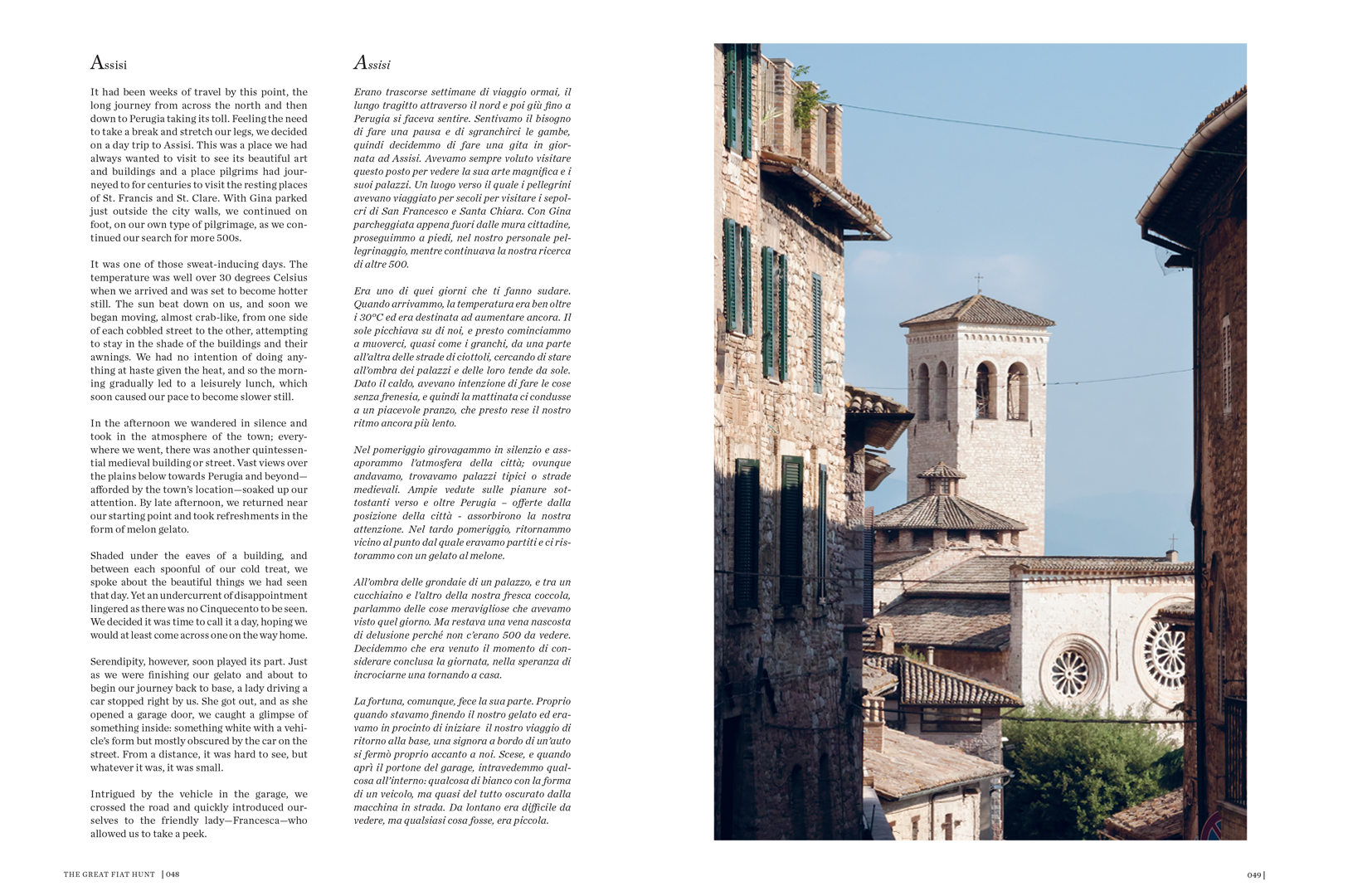






































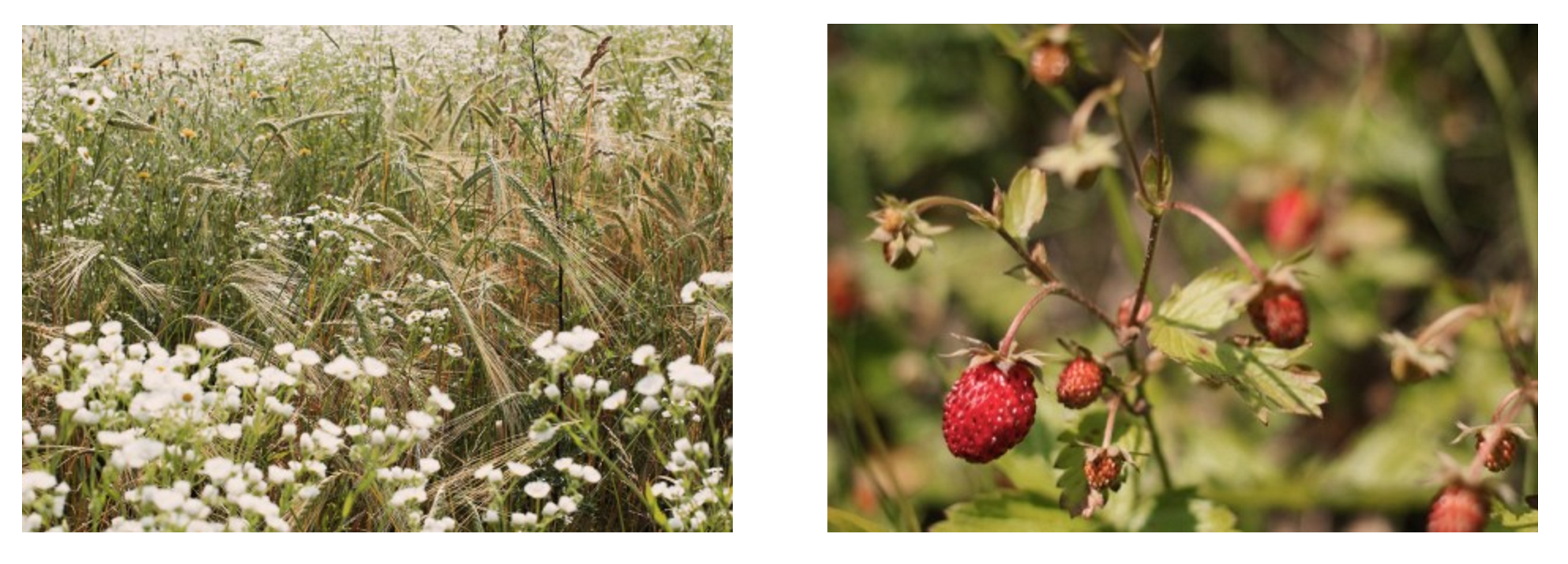




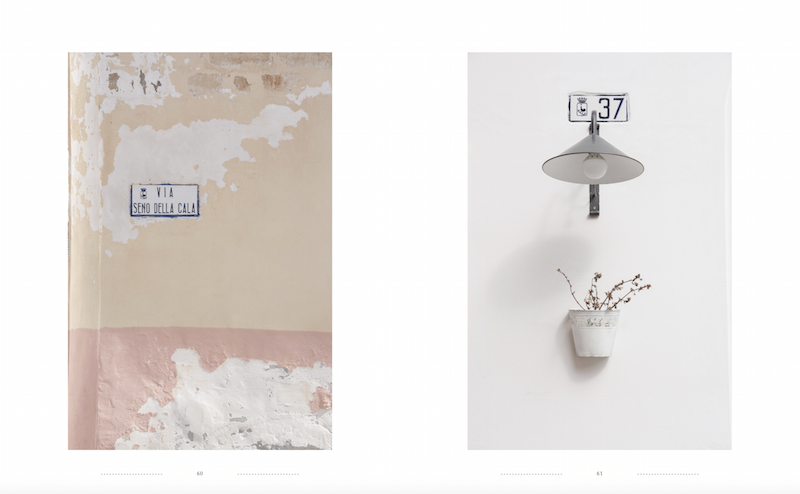
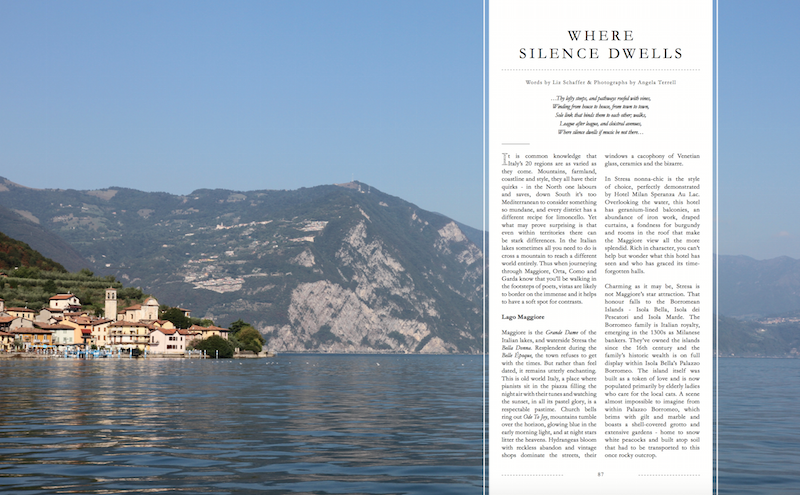
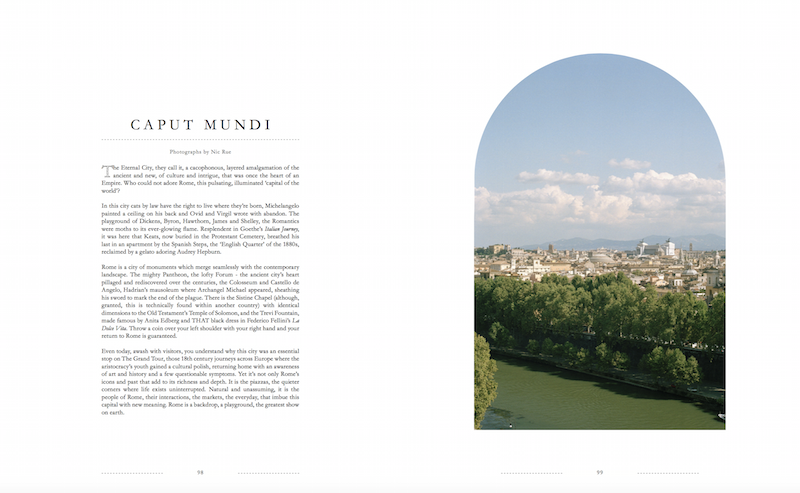


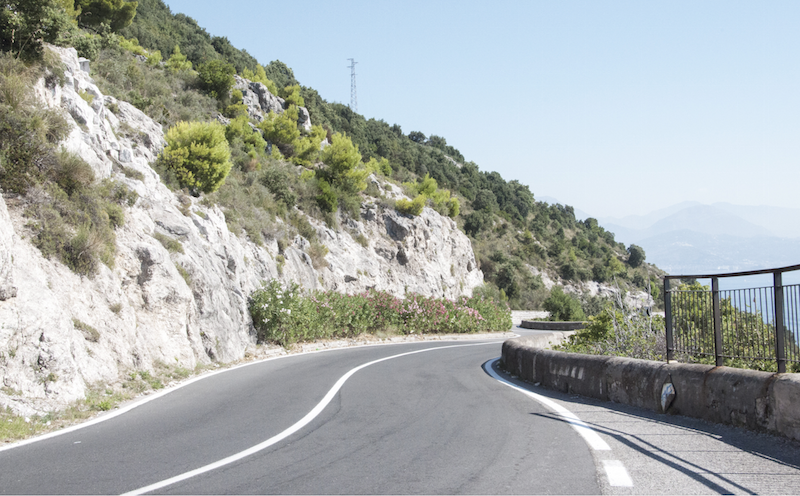
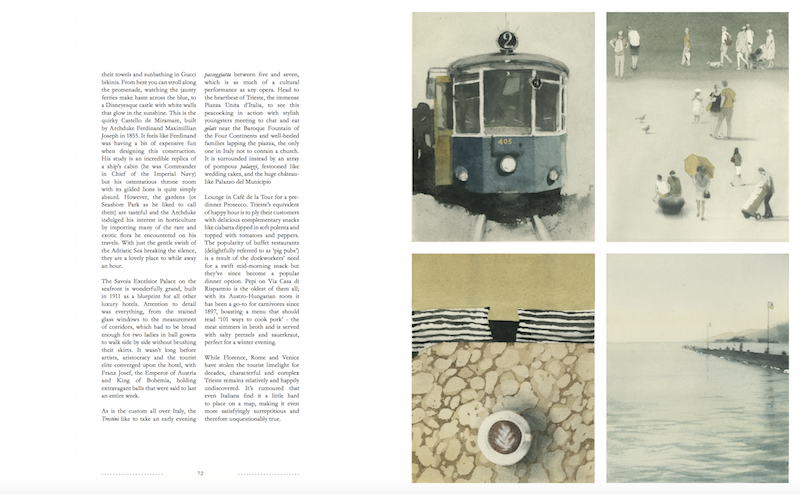
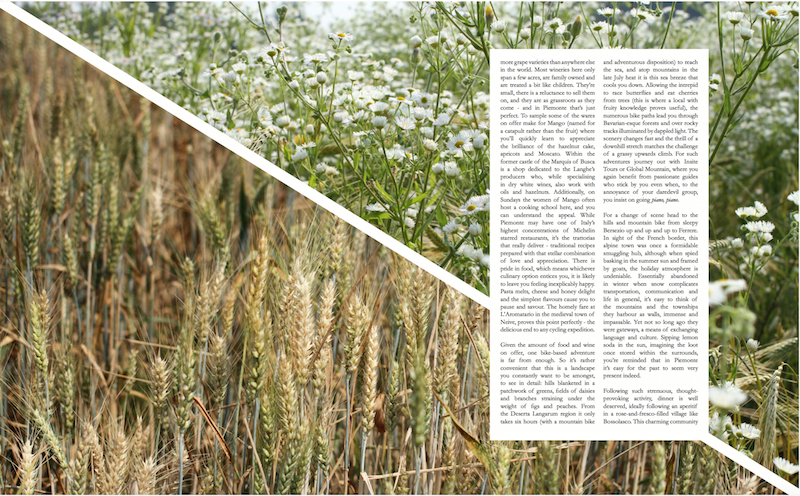
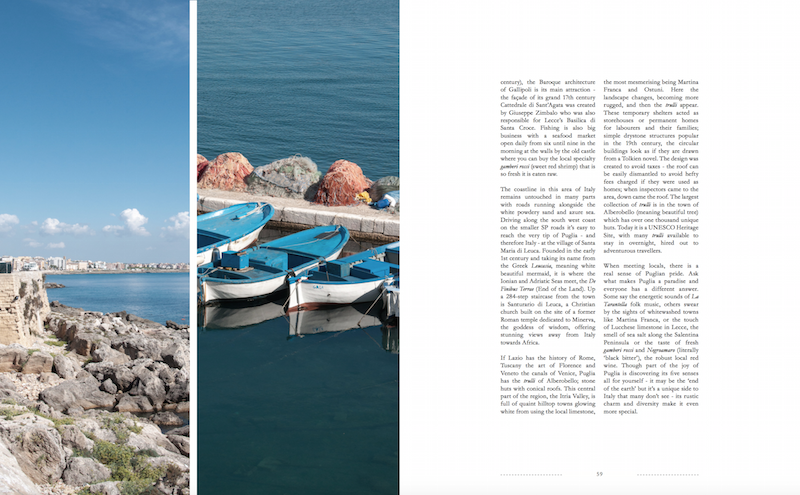




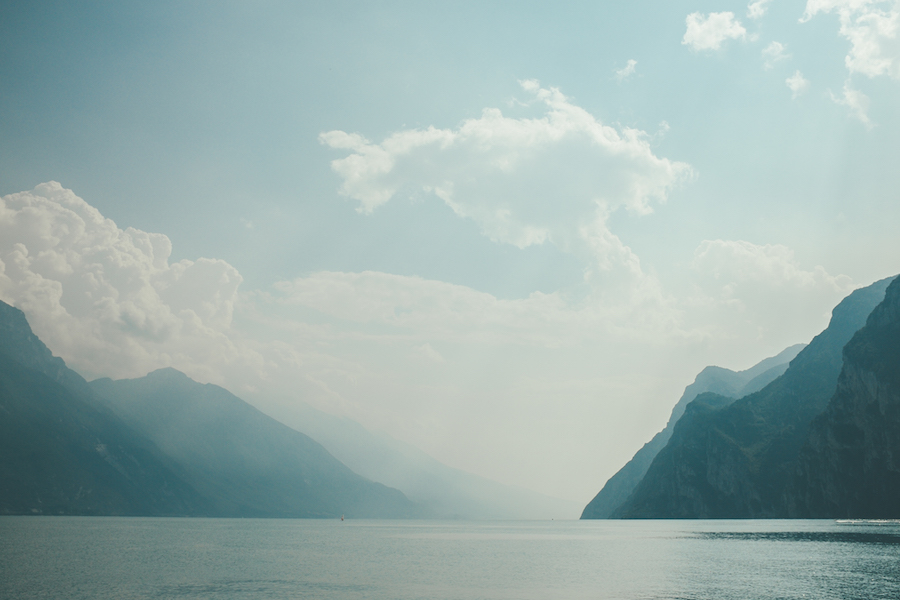


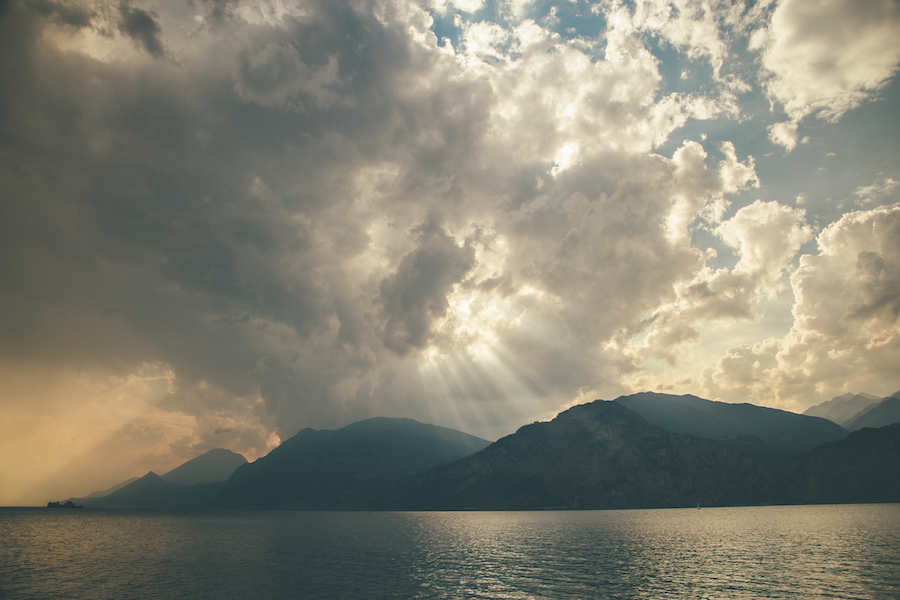



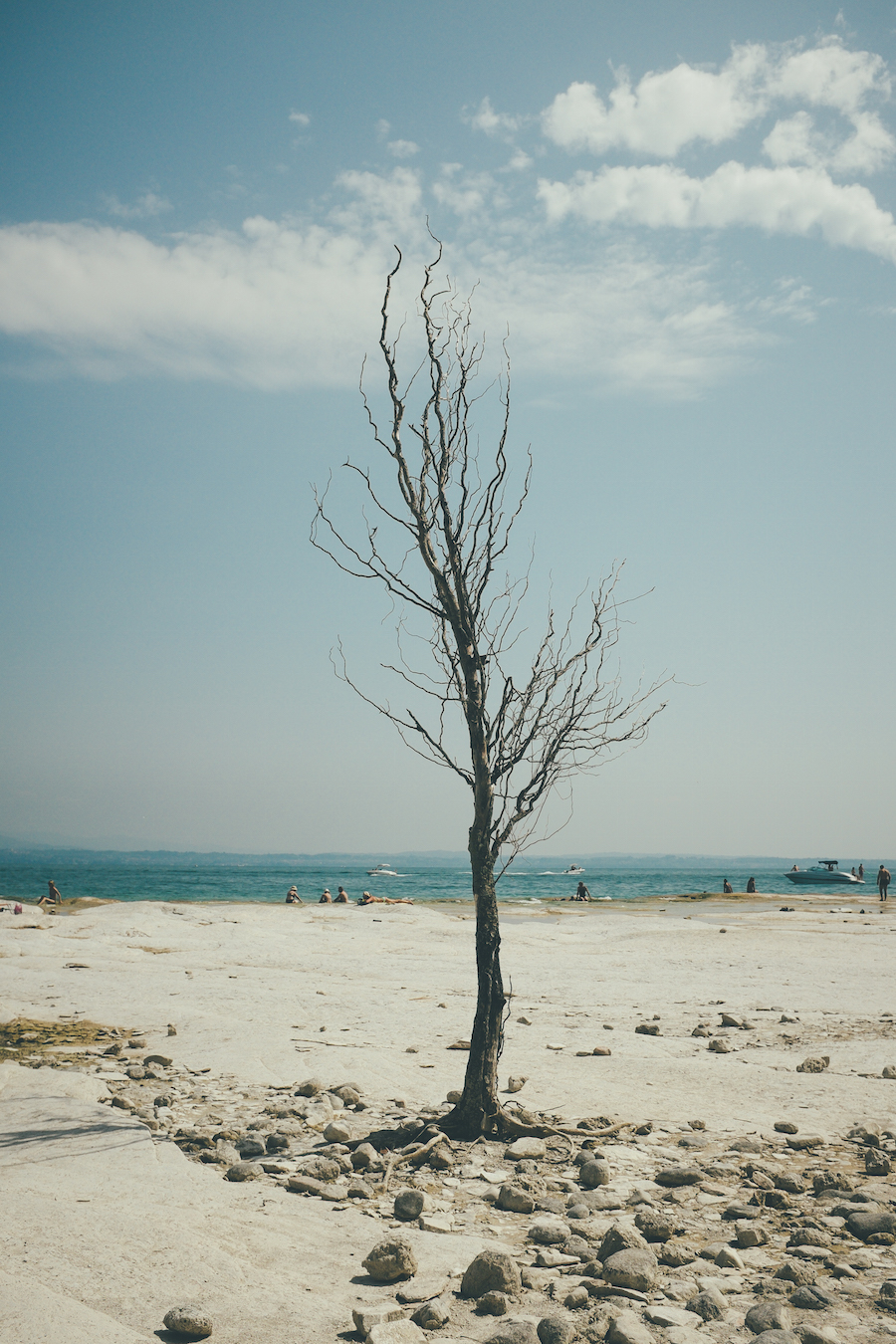
















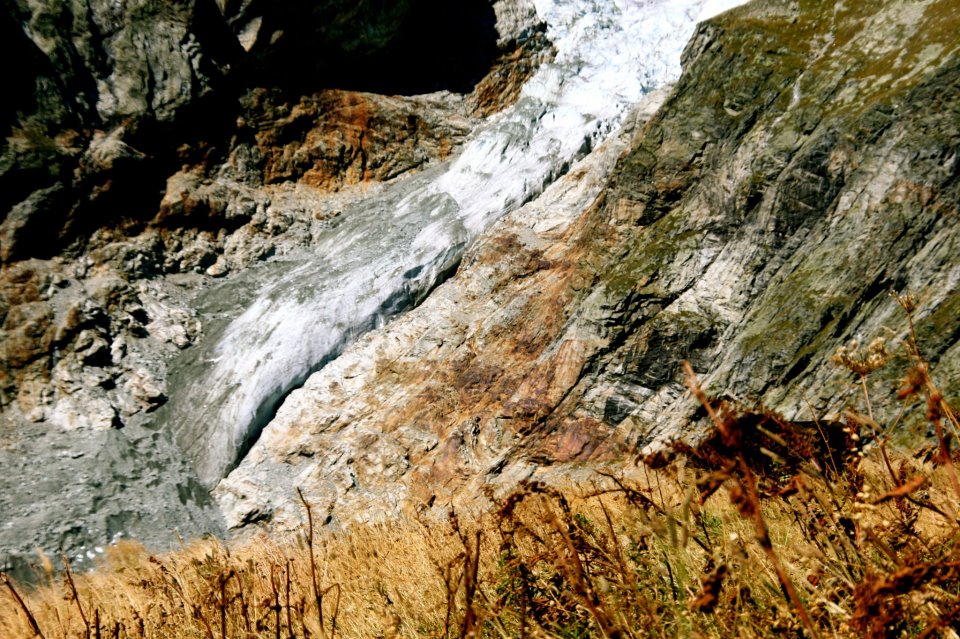


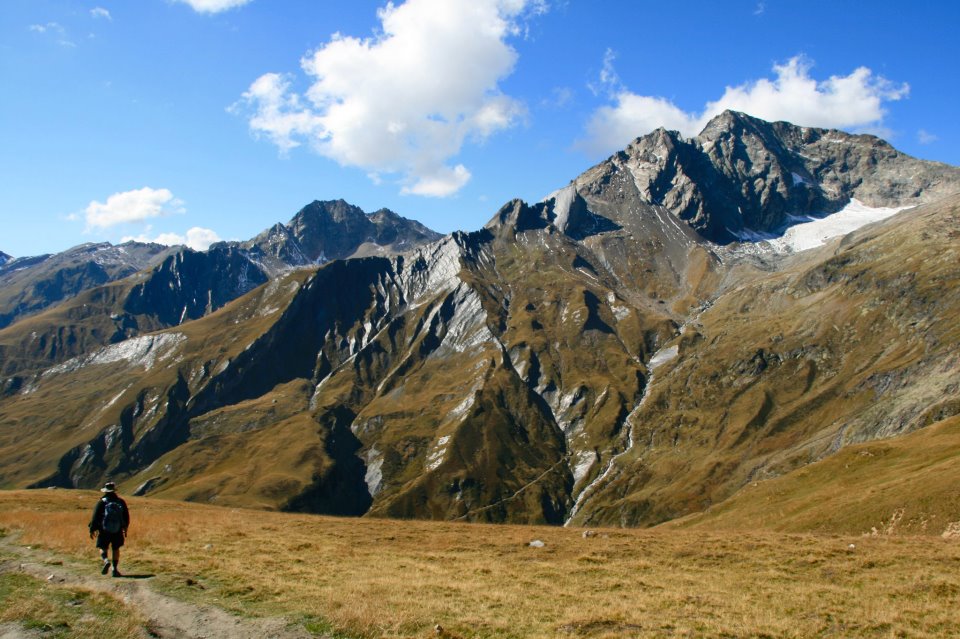


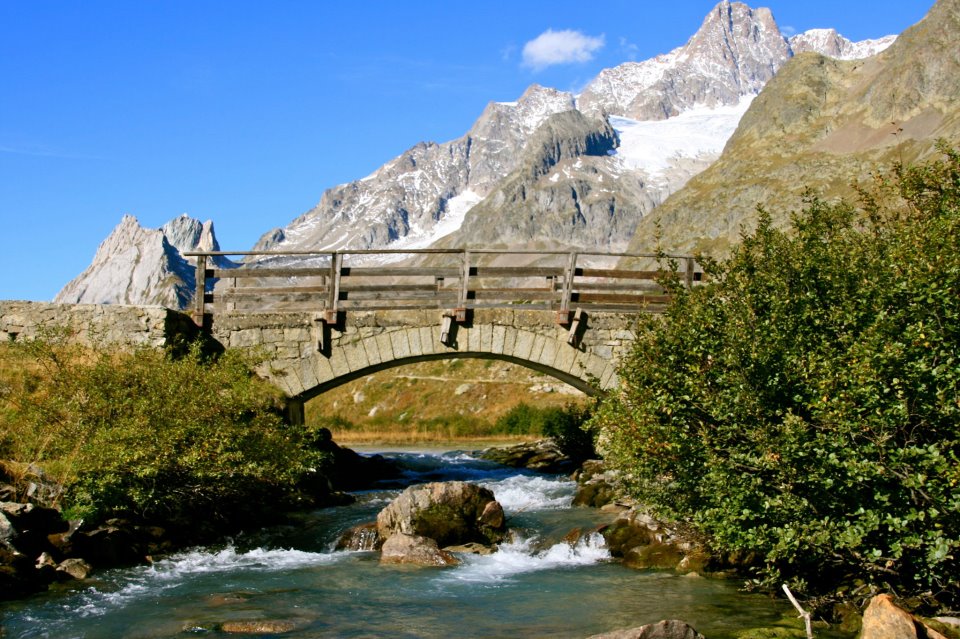

















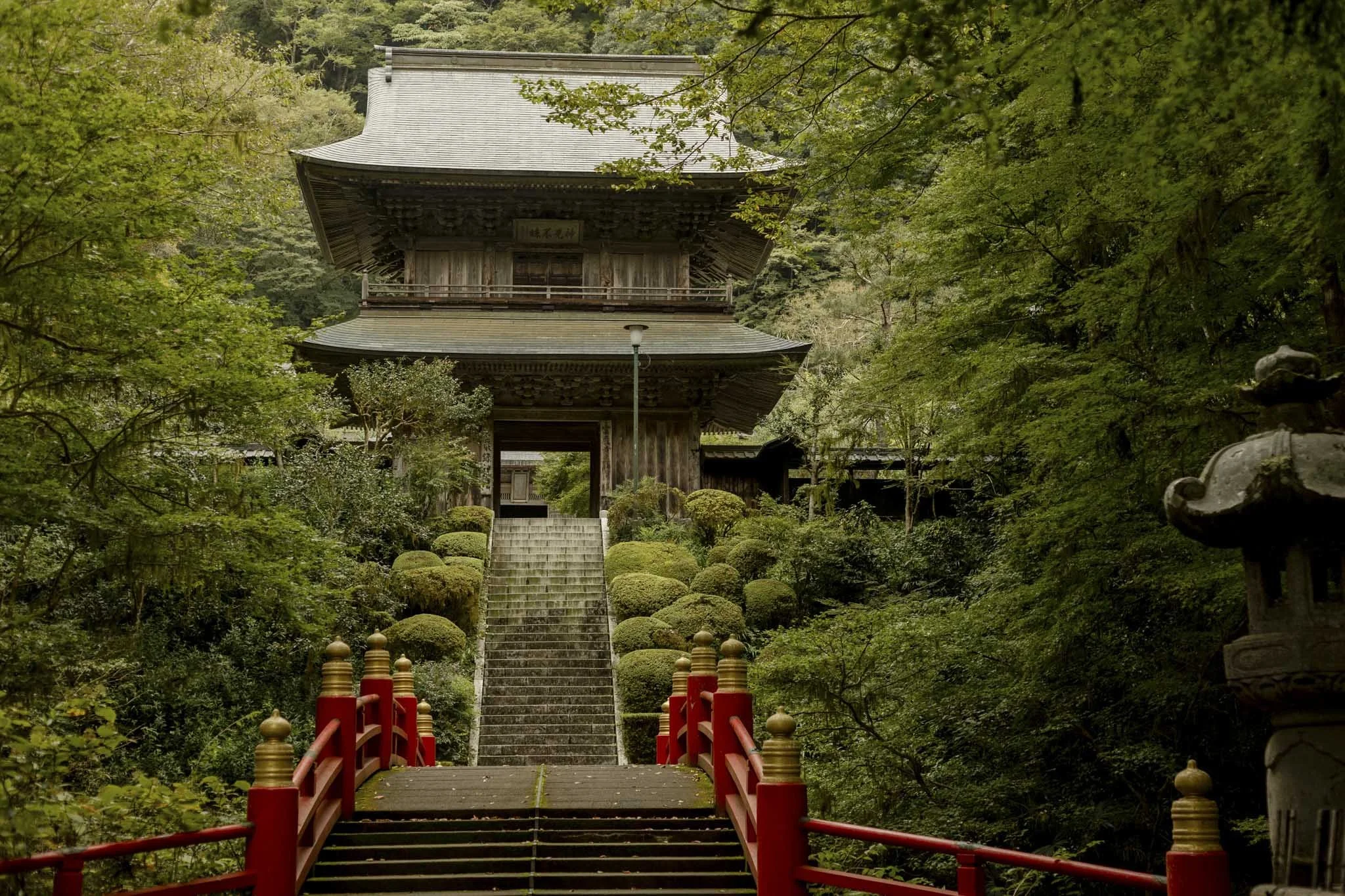












Celebrating Cecil Beaton at Wales’ Hawarden Estate.